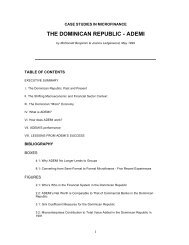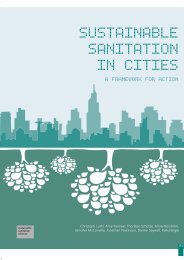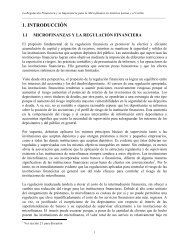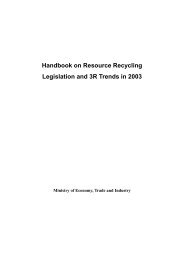The International Implementation Scheme (IIS) - Unesco
The International Implementation Scheme (IIS) - Unesco
The International Implementation Scheme (IIS) - Unesco
Create successful ePaper yourself
Turn your PDF publications into a flip-book with our unique Google optimized e-Paper software.
DESD <strong>International</strong> <strong>Implementation</strong> <strong>Scheme</strong> (<strong>IIS</strong>)<br />
Appendix: Principles of national DESD implementation<br />
At national level, implementation of the DESD is essentially a collaborative process<br />
among all the stakeholders. <strong>The</strong> following sets of questions provide a framework for<br />
starting that process – they are of course indicative given the wide variety of national<br />
situations. <strong>The</strong> questions follow the direction of this plan, and are intended to lead to<br />
concrete actions.<br />
Initiating partnership and action<br />
• Establish who the stakeholders are and hold initial consultations.<br />
• Identify the multi-stakeholder body at national level, which will take responsibility<br />
for the coordination of DESD promotion and facilitation and ensure its link to EFA<br />
process.<br />
• Assess the financial needs of implementing ESD during the decade and identify<br />
sources of funding including existing programmes and funds. Set up financial<br />
mechanisms to cover support to governmental and non-governmental initiatives, if<br />
necessary.<br />
• Hold consultations in development of a DESD plan or strengthening existing<br />
education plans to reflect commitment to ESD, including identification of the key<br />
national issues in sustainable development and of key messages for public<br />
awareness raising, and set national DESD objectives.<br />
• Draw up a communication and advocacy plan with attention to the range and<br />
nature of target audiences.<br />
• Undertake a baseline study to establish how far ESD is already integrated into<br />
educational initiatives and what these are/where these are.<br />
• Examine the national legal and institutional framework, including an assessment of<br />
how local governance structures and processes will facilitate or inhibit broad<br />
participation in planning and implementation at that level.<br />
• Develop a framework for cooperation, across government departments, with civil<br />
society, private sector and NGOs – at national and local levels.<br />
Implementing ESD<br />
• Develop plans for ongoing work to promote public awareness and participation:<br />
messages, media, materials.<br />
• Launch a public awareness campaign and facilitate regular input to the media on<br />
DESD issues.<br />
• Initiate scenario development sketching out a number of scenarios of what highquality<br />
ESD would look like, for instance in schools of different kinds, in adult<br />
learning circles, within a range of development programmes, in different<br />
geographical and socio-cultural contexts, in the framework of different subject<br />
areas. Such scenarios will be a resource for local discussion of how ESD can best<br />
be put into effect.<br />
• Examine and adapt initial and in-service training for educators, facilitators and<br />
teachers to include ESD approaches.<br />
• Examine and adapt curricula in schools and non-formal settings to include ESD<br />
approaches.<br />
51<br />
2005

















